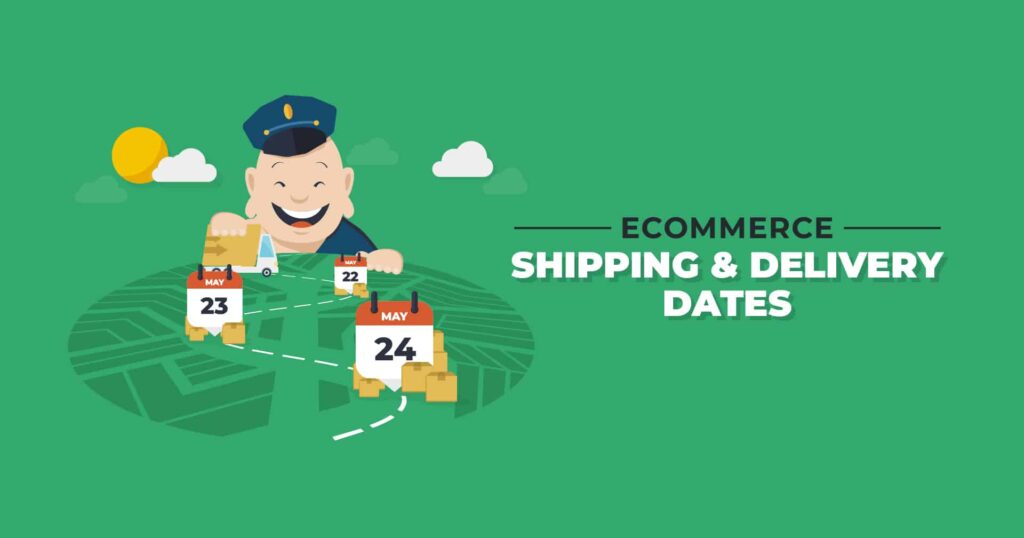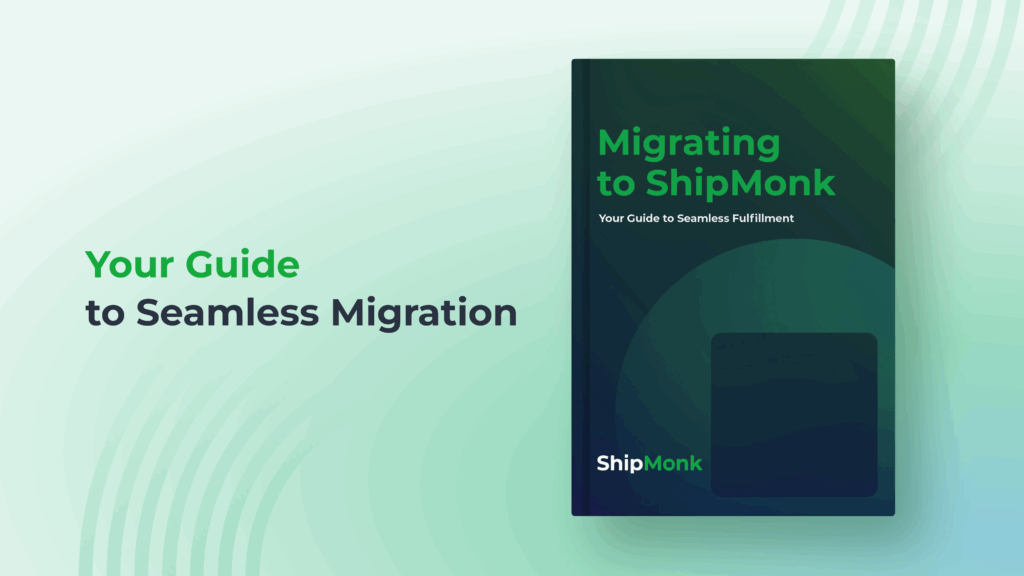Need for speed. It’s not just something Keanu Reeves had in 1994 and Aaron Paul had in 2014; it’s a driving mindset behind every eCommerce order today. When Amazon introduced its next day Prime shipping model, a domino effect was set off that pushed every eCommerce business on Earth to find the fastest shipping options possible. Part of this was to stay competitive in the eCommerce marketplace; the other side of the coin was satisfying customer demands in an era where attention spans, on average, are shorter, and most buyers want their goods yesterday.
Let’s speedily talk about must-know delivery date info that can help you track orders, optimize the eCommerce shipping process, and manage customer expectations.
Shipping Date
This is the date an order from the eCommerce merchant—or more specifically the merchant’s 3PL fulfillment center or warehouse—ships out to the customer. This date is important because it gives customers the ability to calculate when to expect their shipment. For example, if the order leaves the fulfillment center or warehouse on August 24 and the customer paid for 2-day shipping, then they can presume their package will be delivered on August 26. Speed, in this case, really matters because customers have built up excitement in anticipation of a quick delivery.
eCommerce Order Date
Customers may think order dates are the same as shipping dates, but that is not always the case. An order date is the day when a customer clicks BUY on the eCommerce merchant’s website. This can be the same as the shipping date if items leave the merchant’s fulfillment center or warehouse the exact day the order comes in. However, that may not always be possible.
This could be due to the day the eCommerce order comes in—holidays, weekends. It could be due to the time the order comes in—outside of working hours, outside of shipping cutoff times, Friday afternoons. And it could also be due to constrained workflow—peak season, abundance of orders coming in, fulfillment center or warehouse labor shortages. In general, in order to best set customer expectations and avoid dissatisfaction, make sure your eCommerce website is set up to send the shipping date confirmation separate from an order confirmation.
Invoice Creation Date
Customers may not always be billed and invoiced on the same date. The invoice may be created days before an order is processed and, thus, days before a customer is billed for said eCommerce order. This information is useful to the merchant in terms of sales reporting, and to a customer in terms of checking up on orders, filing for returns, and other aspects of an optimal post-purchase experience.
Estimated Shipping Date
If customers don’t select a specific shipping option (2-day shipping, overnight shipping, etc.) in which exact delivery dates are expected, an estimated shipping date gives peace of mind by providing an educated guess about when orders will be shipped out. The “estimated” verbiage in this type of shipping confirmation allows eCommerce merchants a little leeway—making it okay if the day a package is sent out is a bit later or earlier than expected. Estimated shipping dates are crucial because things like the exact hour an order is made can immensely influence when it is shipped. For instance, a purchase made on Thursday at 12:00PM will reach customers much faster than an order placed on Friday at 4:00PM.
Furthermore, estimated shipping dates come in handy when it comes to backordered items i.e. goods that have gone out of stock before an eCommerce order can be fulfilled. When customers buy a backordered item, estimated shipping dates let customers know when they can expect that item to reach them, based on when the company anticipates inventory restock. This may not be exact either, but based on the accuracy of an eCommerce merchant’s inventory management, the projection should be fairly on target.
Estimated Delivery Date
Like estimated shipping dates, estimated delivery dates give customers reasonable, but flexible expectations about when to expect an eCommerce order to arrive. This could be displayed on the merchant’s website at the time of checkout and/or sent after the fact when an order confirmation is triggered via email. The point, as with estimated shipping dates, is not to guarantee a timeline, but offer transparency of the eCommerce merchant’s intention to get you the package within a certain timeframe.
Note that estimated delivery dates may be updated once an order has left the fulfillment center or warehouse and is in the hands of a shipping carrier. If shipping delays occur once the package has changed hands, customers should be notified with a new estimated delivery date (based on available information) so their expectations are managed and businesses avoid negative reactions to a package arriving later than buyers anticipated.
Delivery Date
This is the day an eCommerce order is actually delivered to the customer. With a ton of factors affecting shipping, delivery dates may not always match initial estimations. Why? Well, unfortunately no matter how efficient your fulfillment center or warehouse is, delivery exceptions occur, including but not limited to—problems with customs, unexpectedly severe weather conditions, failed delivery attempts, and damaged or missing shipping labels. The important thing to remember when it comes to handling customer experience is to manage delivery exceptions, give your best estimated delivery date prediction based on all available information, and update customers along the way with new estimated delivery dates as you track orders in the hands of shipping carriers.
Return Date
A return date is the day that returned item(s) make it back to the merchant, fulfillment center, or warehouse for processing. Don’t confuse this with a return window or a return cutoff. A return window is the total time a customer has to initiate a return of their eCommerce order and send the product back to the merchant. This is dependent on each seller’s policy (ex. 7 days since a package was delivered, 30 days, 60 days, etc.). Meanwhile, a return cutoff is the last day a customer has to make an eCommerce return.
Things to Consider When Estimating Delivery Dates:
We already discussed some things that can cause estimated delivery dates to change. In the interest of providing full transparency on the fluxing phenomenon that may affect eCommerce order delivery times, let’s dive into the four main causes for delay that shipping projections encounter.
1.) Transit Times differ depending on shipping carrier and shipping services, delivery destination (how many shipping zones the package needs to travel through), and modes of transportation required for shipping (airplane, cargo ship, truck), and more.
2.) Holidays can slow down shipping on two fronts: if they’re federal holidays and fewer people are working and if the holidays are causing a spike in orders that keep fulfillment centers and warehouses extra busy. Note, if eCommerce merchants sell internationally, it is important to be aware of holidays in the countries you do business with and keep customers informed about yours. After all, if a sender or receiver isn’t aware of a country’s federal holiday closures then that can impact the accuracy of delivery projections and realistic customer expectations.
3.) Weather like rain, snow, severe storms, and so on can slow down deliveries. If we just take the United States, considering it’s common to experience delays during winter for our more northern states and during hurricane season for our more south eastern ones, it’s important to adjust estimated delivery dates and send updates to customers if their items are held up by these temperamental factors.
4.) Customs bring a variety of complex variables to the shipping equation. In a word, for the eCommerce merchant selling to international customers, things can get “complicated”. It may take days or even weeks for a package to be cleared through customs depending on the actual item being sent, sender information, buyer information, tariff codes and other paperwork, if a package has DDP (Delivery Duties Paid) or not, and more.
On the topic of customs, keep in mind that shipping carriers like UPS, FedEx, or DHL can have much faster international shipping times compared to USPS because the latter has to eventually pass packages on to a specific country’s mailing service for final delivery. The other three shipping carriers have their own footprints on the ground in most countries and therefore can take an order from Point A to Point B without the need for outside intervention.
In addition to researching what shipping carriers to use, getting an eCommerce order to an international buyer can be simplified if you avoid customs barriers by working with a 3PL fulfillment center that has boots on the ground abroad. Take ShipMonk—we have eleven strategically-located fulfillment centers that help us minimize the number of shipping zones a package needs to travel through to get delivered. If an ordered item leaves a warehouse within the country it is going to, that can cut down delivery time tremendously!
Delivering on Expectations
Shipping dates play a huge role in the vitality of an eCommerce merchant. On the one hand, they impact the speed you can do business; on the other, they have a huge effect on customer experience. While there may not be a fast solution to every shipping problem, how you handle shipping issues—keeping timelines as accurate and transparent as possible with customers (from the start and with follow up ETAs)—has huge ripple effects.
Past that, you can ensure your customers get their eCommerce orders as quickly as the laws of time and space allow by working with a fulfillment center that moves with speed and purpose while never sacrificing accuracy.
Contact ShipMonk today to learn how we keep our eye on the ball with speedy, cost-effective shipping options and an advanced fulfillment platform that makes managing your eCommerce orders easy. We’ll help you oversee customer expectations on all fronts, allowing you to deliver on your brand promise!





